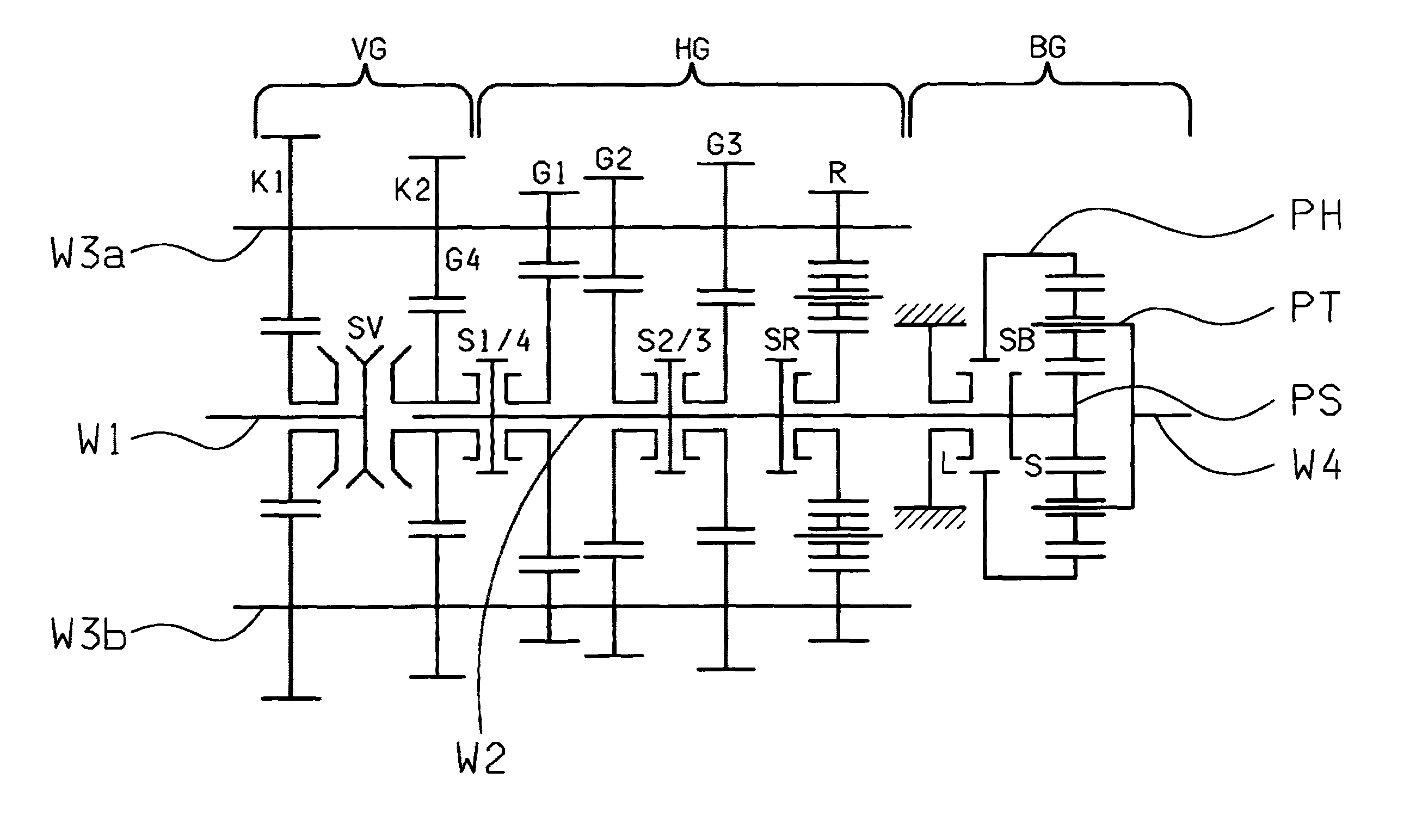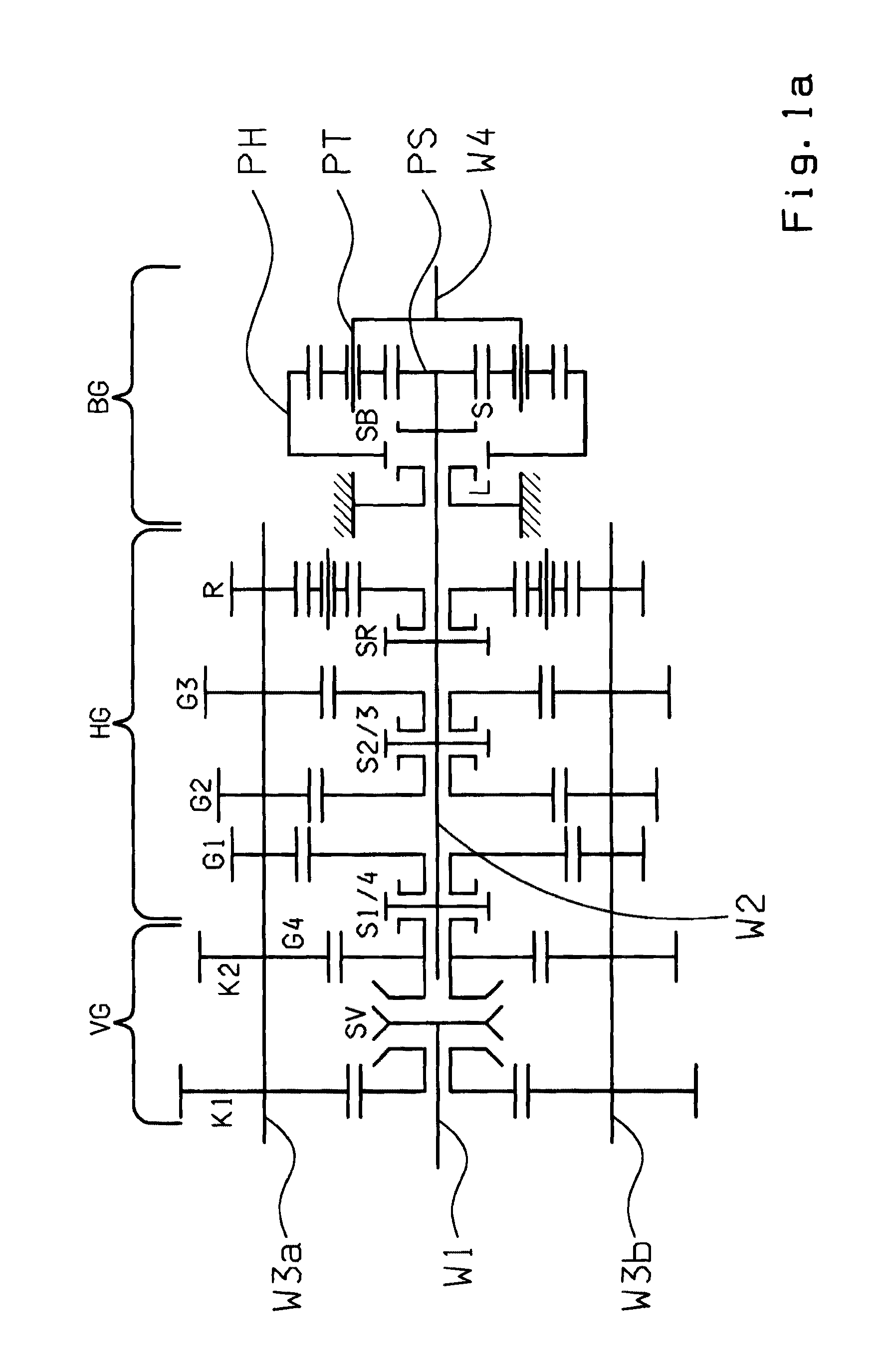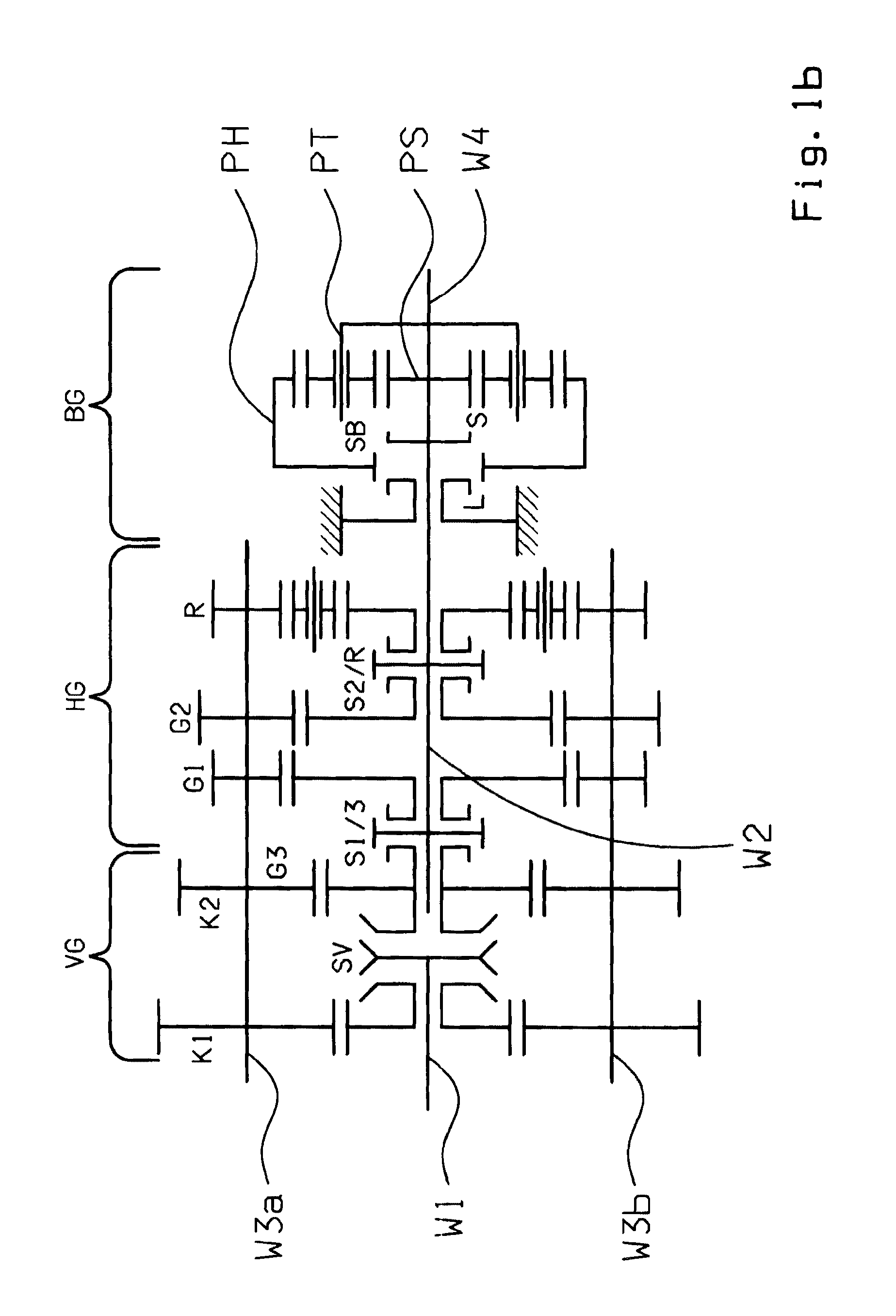Automatic group transmission
a transmission group and automatic technology, applied in the direction of mechanical equipment, transportation and packaging, gearing, etc., can solve the problems of synchronized shifting, limiting the life of the transmission as a whole, and affecting the overall shift sequence. , to achieve the effect of synchronizing the shift sequence, limiting the life of the transmission as a whole, and reducing the transmission speed
- Summary
- Abstract
- Description
- Claims
- Application Information
AI Technical Summary
Benefits of technology
Problems solved by technology
Method used
Image
Examples
Embodiment Construction
[0029]FIGS. 1a and 1b show schematic representations of example structures of the group transmissions according to the invention. The main transmission HG is of countershaft design and has a main shaft W2 and two countershafts W3a, W3b. In the embodiment according to FIG. 1a, the main transmission HG is a four-stage transmission with four transmission ratio steps G1 to G4 for forward driving and one transmission ratio R for reversing. In the version according to FIG. 1b, the main transmission HG is a three-stage transmission with three transmission ratio steps G1 and G3 for forward driving and one transmission ratio R for reversing.
[0030]The loose wheels of the transmission ratio steps G1, G2, G3 and R or G1, G2 and R, respectively, are in each case mounted to rotate on the main shaft W2 and can be engaged by means of claw clutches. The associated fixed wheels are arranged rotationally fixed on the two countershafts W3a and W3b. The respective highest transmission ratio step G4 or G...
PUM
 Login to View More
Login to View More Abstract
Description
Claims
Application Information
 Login to View More
Login to View More - R&D
- Intellectual Property
- Life Sciences
- Materials
- Tech Scout
- Unparalleled Data Quality
- Higher Quality Content
- 60% Fewer Hallucinations
Browse by: Latest US Patents, China's latest patents, Technical Efficacy Thesaurus, Application Domain, Technology Topic, Popular Technical Reports.
© 2025 PatSnap. All rights reserved.Legal|Privacy policy|Modern Slavery Act Transparency Statement|Sitemap|About US| Contact US: help@patsnap.com



